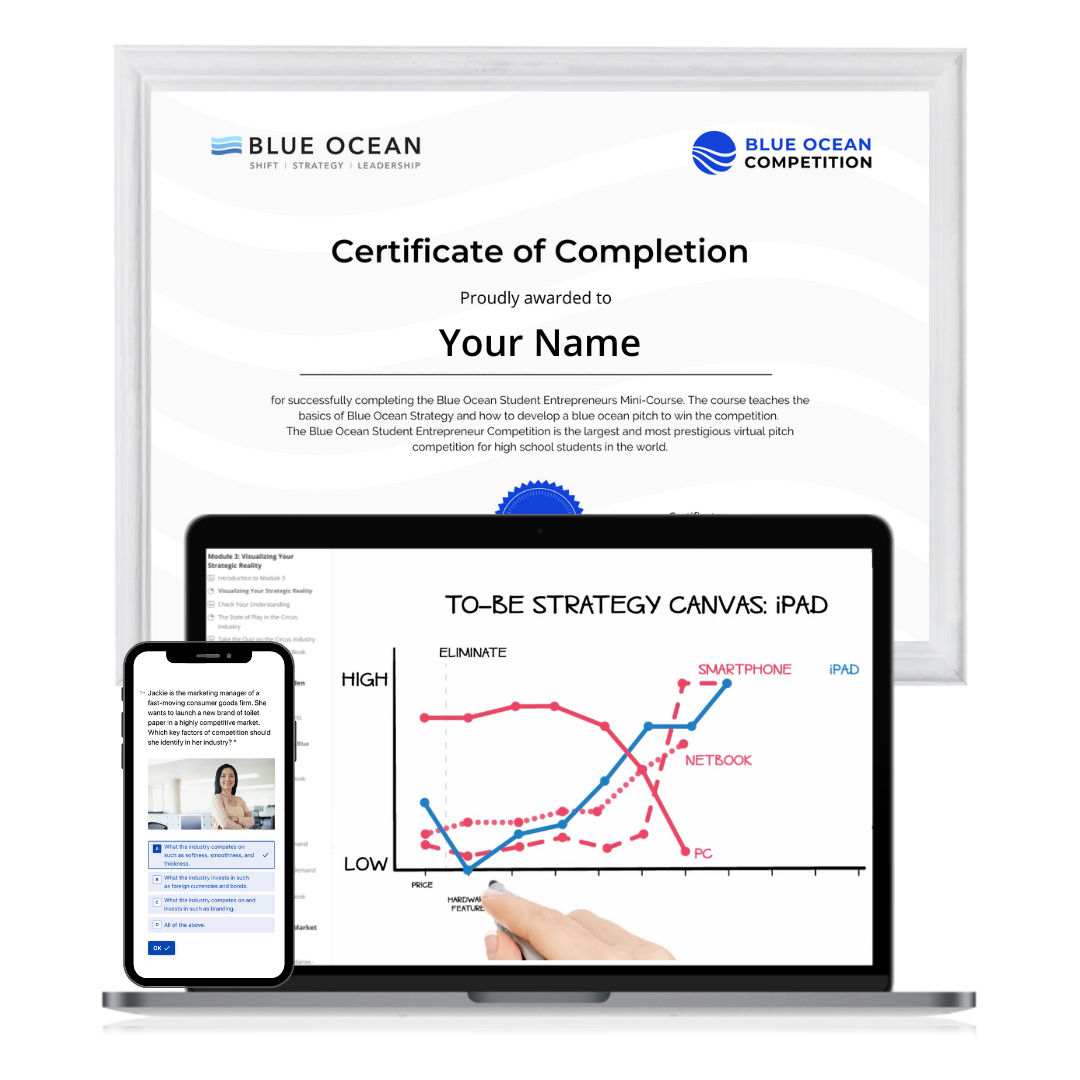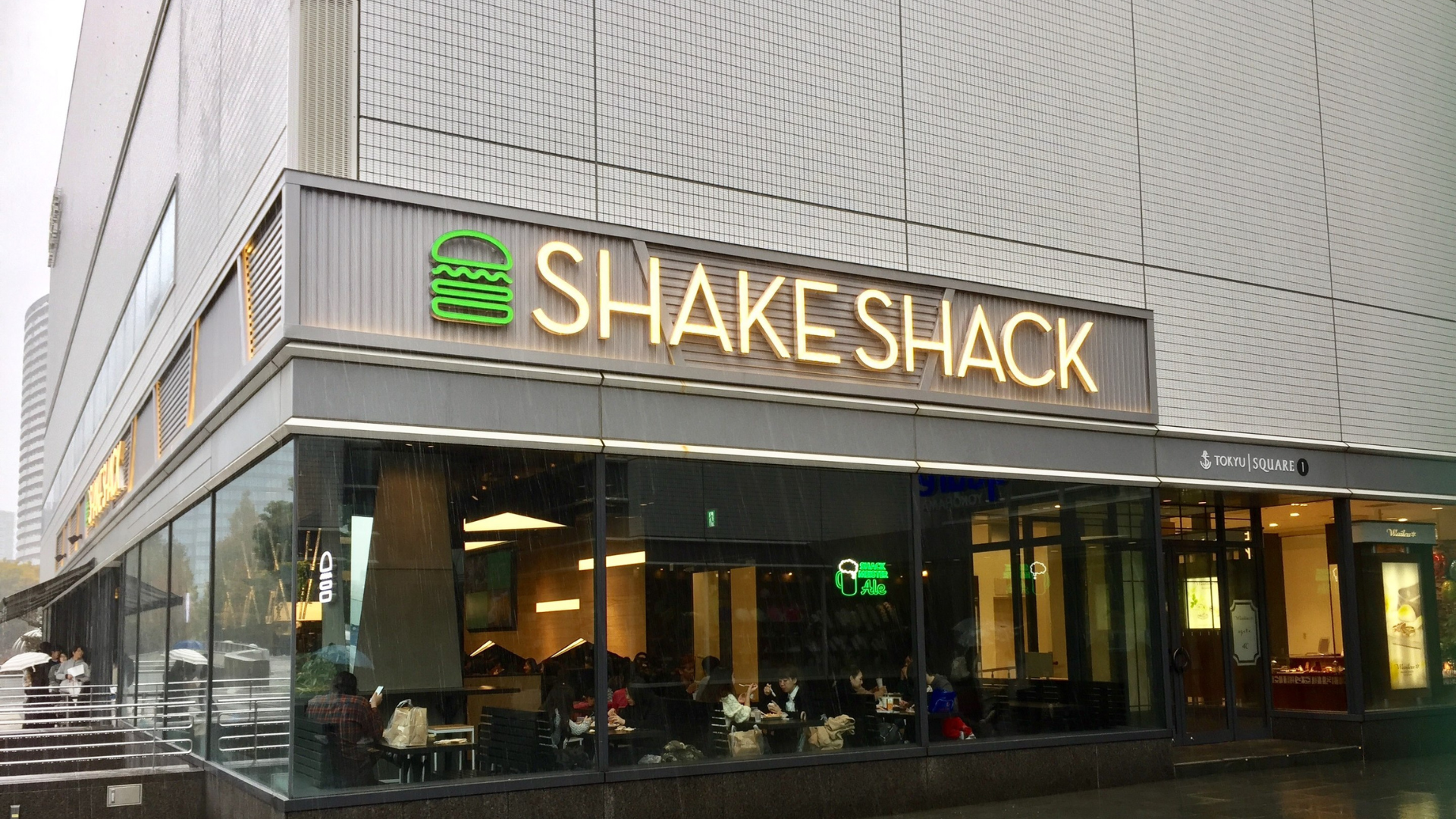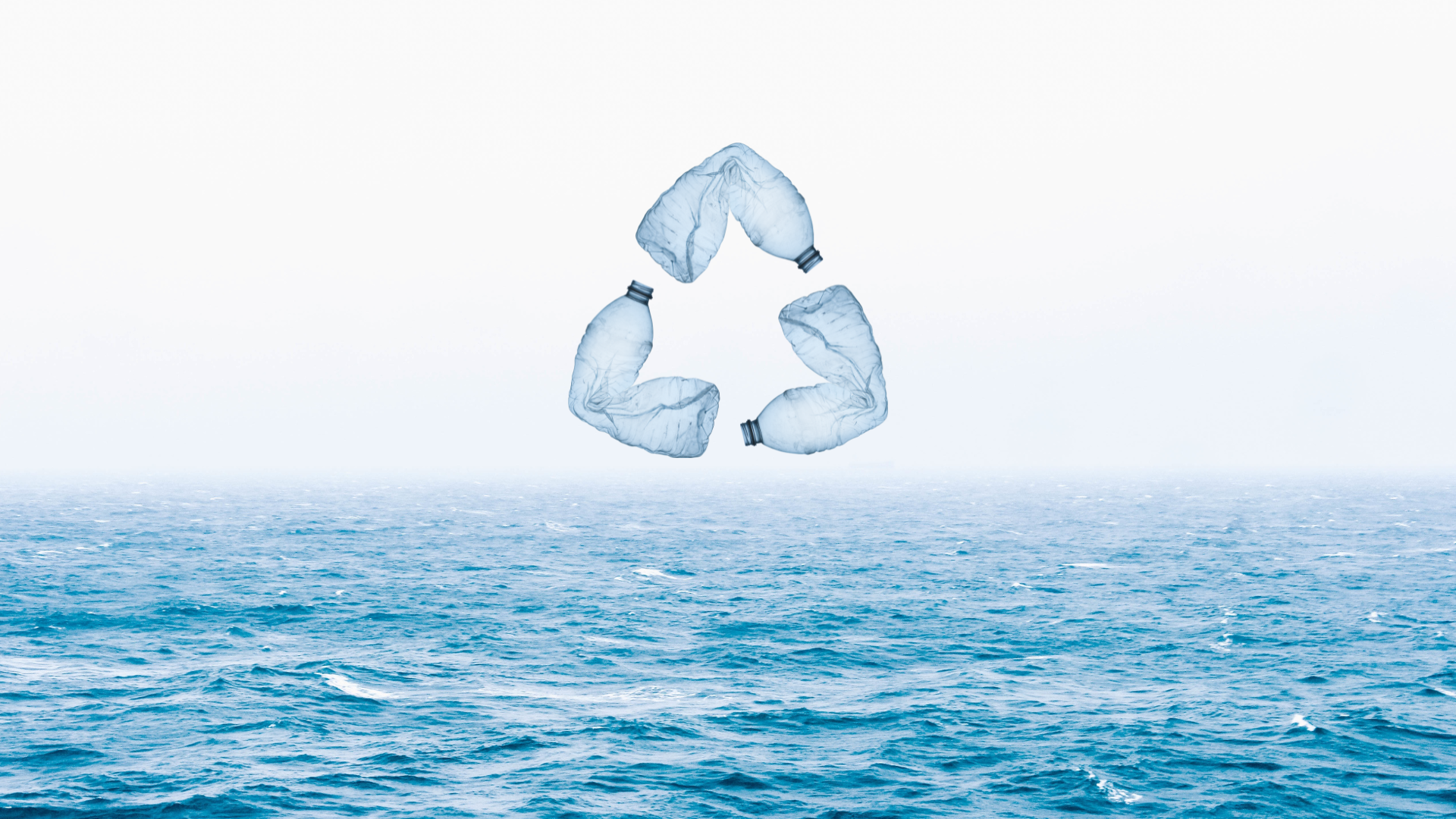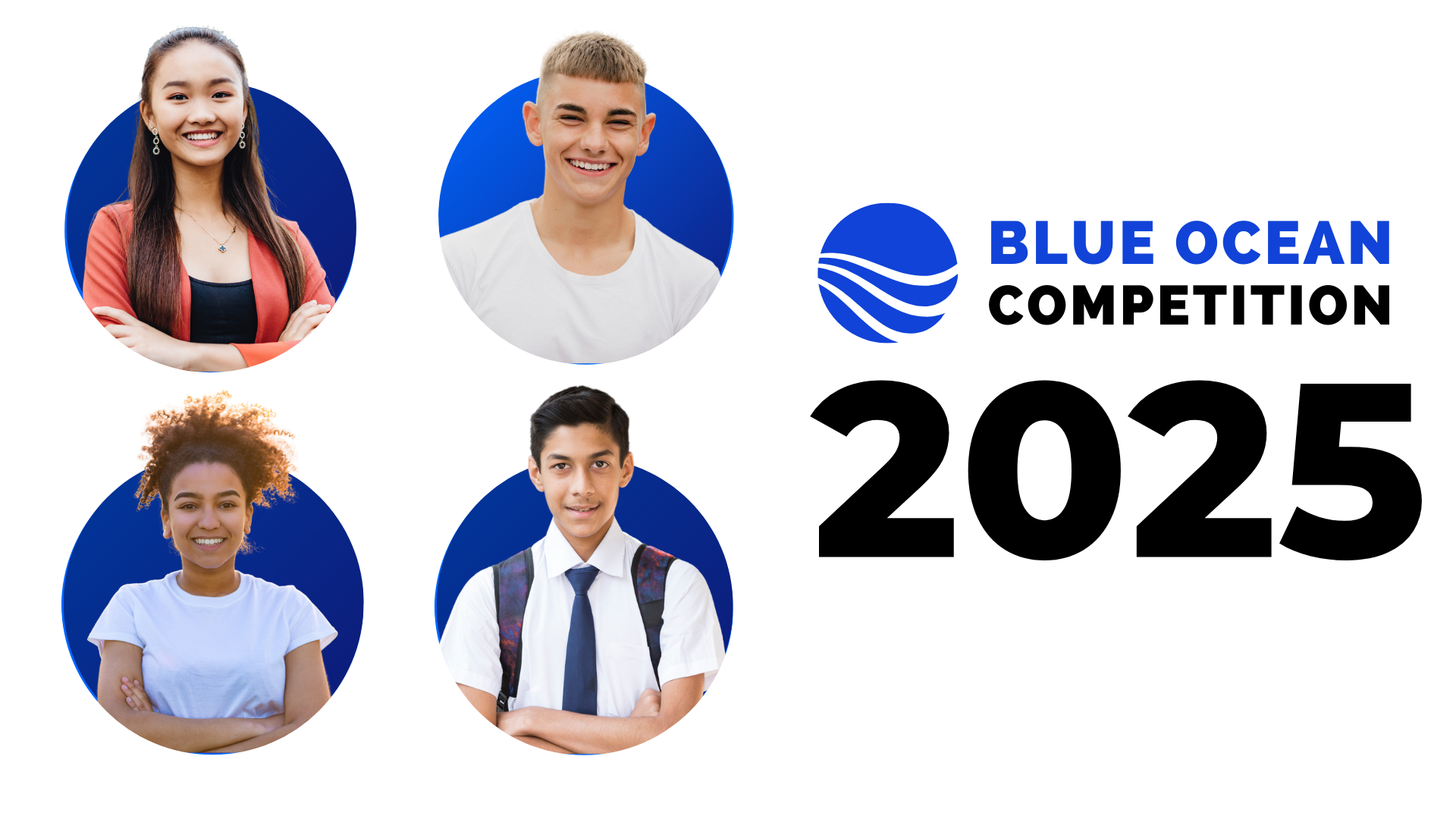By Eric Sera,
Eric Sera, teacher at Munster High School in Indiana, explains how he integrated the Blue Ocean Student Entrepreneur Competition into his Principles of Entrepreneurship curriculum, highlighting the benefits, challenges, and impact on students.
Introducing Blue Ocean to the Curriculum
I was first introduced to the Blue Ocean Strategy concept by Dr. Zafar Iqbal while studying at DePaul University’s Kellstadt Graduate School of Business in 2016. As a Principles of Entrepreneurship teacher, I was eager to incorporate this strategy into my curriculum. My excitement grew upon discovering the Blue Ocean Student Entrepreneur Competition, which provided an opportunity for students to apply this strategy in a real-world context.
Munster High School had never participated in this competition before. Given Munster’s strong academic reputation, I saw this as an opportunity to further develop our students’ business acumen and give them a competitive edge.
Implementing Blue Ocean in the Classroom
In November 2023, a select group of top students piloted the program during the first semester as an alternative to their final project. This pilot allowed me to assess potential challenges from a student’s perspective and refine the curriculum accordingly. As a result, Blue Ocean Strategy became the core focus for approximately 70% of the third-quarter grading period.
Student Reflections on the Competition
I feel strongly that groups may need to become mandatory. The work is possible to do solo, however I would not recommend it as many minds work much better than just one. A team would have been helpful for some of the parts that I struggled with, in particular I am much more analytical than creative, so having a more creative person to help me with Simulon would make Simulon a better product and a much easier pitch for the competition. Blue Ocean should be done next year as I feel the best way to truly learn entrepreneurship is to simply do and try it. Blue Ocean provides an excellent opportunity for students to try being an entrepreneur and thus it should continue to be done at MHS. My favorite tool was the Strategy Canvas/ERRC because all it takes to have a great entrepreneurial concept is tweaking some existing features of the current market, and creating a couple of new features. Those two tools are very helpful in doing just that. To me, those two tools are the magic of the Blue Ocean Strategy – Nick G.
I think blue ocean should be done again at Munster High School because it definitely is an interesting strategy that I’m glad I learned about. I think a little bit more time next year to do the beginning parts of the project or to brainstorm ideas would be better. I think that my favorite blue ocean tool was the noncustomer tiers because it helped you start to really think outside of the box about who you wanted to reach and how you would shape your product. – Brooke B.
I think that it should be done again. I enjoyed having class time to create and plan the project with my team. We genuinely learned about methods to create a product and open up a new market. It was certainly a beneficial learning experience. The competition aspect also gives a competitive edge into it that I enjoy. The strategy canvas was my favorite tool. It helped us identify areas in the market in which we could improve. Without it, we might’ve taken way longer to think of an idea, and what would make our product a blue ocean. To be honest, I didn’t have a least favorite tool. I don’t think that any information was irrelevant, because it all helped build a background on blue ocean strategy that helped us throughout the way. – Simon C.
I definitely think that this project should be done next year. It is a good break from the normal class work that is done on the daily and it promotes a lot of creativity. It also provides students interested in Business with first-hand experience in the field. – Nadia B.
My favorite blue ocean tool was the ERRC grid because it was easy to use and easy to understand. It also helped me get a perspective on what I plan on doing. – Jeremiah F.
I believe that Blue Ocean should be done next year because this was a very fun activity and really pushed us to think and actually create something. This gave us some experience with actually being an entrepreneur. – Isabel G.
Even if you don’t actually want to make the product that you present it is still a good leaning experience. If you do want to make you product it is a good start as you can plan out all the steps needed. – Alexander H
Blue Ocean is a unique and fun experience that more students should try out next year. – Ahsan J.
I think blue ocean should be done again at MHS because it sparks creativity in students to see what they can create in the future. – William K
MHS taking part in Blue Ocean was good because it allowed students to get their ideas out there to the public. – Xavier L.
Personally, I think that the Blue Ocean competition should actually be an entire club. – Christopher P.
Blue Ocean is a great opportunity for future entrepreneurs to use their skills to make something big and great, and they can feel accomplishment in what they did. – Carson P.
This blue ocean competition was invaluable to my future career. I learned how easy it is to create and plan an idea that would disrupt any market. I liked that I finally got around to learning to create a video from scratch, I always thought it was super hard, but it’s easy, although it took longer than I thought. – Raunav P.
Blue Ocean is a great project for business class. It really shows you how to think out of the box, get out of your comfort zone, most importantly learn tools to make a blue ocean product. – August S.
Supporting and Motivating Students
I put together a slide deck to show how Apple used Blue Ocean for the first User-Friendly Home Computer, then later with the first User-Friendly Smartphone.
After that slide deck we went over several case studies of others that successfully executed the Blue Ocean Strategy.
The Certification was a class assignment. Students were given one block schedule day to go through the on-line training and complete their certification.
Blue Ocean Tools like: ERRC, Strategy Canvas, Buyer Utility, Non-Customer Tiers, were graded assignments. Each submission received detailed feedback. I also had one on one sessions with students as well.
Each student was required to take my constructive feedback from the previous assignments into account and create a Slide Deck pitch as an assessment using the official judge’s rubric as the assignment rubric. From there I provided one more round of graded feedback on each submission.
Students were then required to watch at least ONE of the Top 30 finishers from 2023 to serve as a model. I told them to pay attention to how they organized and used the tools to create their respective strategies and pitches.
The students were then given class time to prepare a video presentation (some recorded in class, in the hall, or in break-out rooms in the media center).
We then showcased student video pitches and students provided feedback based on the judges’ rubric.
A small number of pitches had potential but were not quite ready in time for the deadline. In those cases, I encouraged students to keep working on their pitches and submit for next year.
We wrapped up the project by having the students conduct a reflective exercise of what they liked, what could’ve been better, etc. Samples of those answers are provided in Question 4.
After having time to assess and reflect. Next year I and my colleague will begin explaining foundational concepts for Blue Ocean Strategy in Semester 1. I will have the students reverse engineer previous Blue Ocean Strategies to help give them a stronger sense of how to make the most of the tools. By taking care of the aforementioned in Semester 1, they will have more time to flesh out ideas and make refinements before next year’s deadline during Semester 2.
Fostering Collaboration and Teamwork
To enhance collaboration, I regularly checked in on student groups, facilitated discussions, and collected status reports. Some students suggested forming a Blue Ocean Strategy Club, an idea I am currently working to implement. This club could also benefit DECA students by providing them with an advantage in entrepreneurial competitions.
Students also utilized Tutorial Time (Thursdays after 2nd Hour) and met independently after school to work on their projects.
Engaging with Educators and Industry Professionals
To enhance the competition experience, I connected students with my professional network, guided them in crafting professional emails for outreach, and introduced them to local and state chambers of commerce. These connections provided valuable insights and mentorship opportunities.
Conclusion
Integrating the Blue Ocean Student Entrepreneur Competition into the curriculum has been a transformative experience for my students. It has fostered creativity, critical thinking, and real-world entrepreneurial skills. As we refine and expand this initiative, I look forward to seeing even greater student engagement and success in the years ahead.









